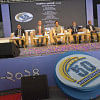Perennial financial insolvency of small enterprises: reasons and remedies

Micro, small, and medium enterprises (MSMEs) perform essential economic functions as major drivers of economic growth and social progress in Bangladesh as in other countries.
The contributions of MSMEs to employment creation, poverty alleviation, creation of new enterprises, start-ups, entrepreneurship development and innovation, and decentralised industrial growth are widely recognised and documented empirically in both developing and developed countries.
However, their full potential for growth and expansion is compromised to a great extent because of their financial insolvency resulting from restricted access to the sources of institutional finance from banks and non-bank financial institutions.
The chronic problem linked to access to equity capital, term loans and working capital loans, including bridge financing, continues to impede the growth, smooth operations, and expansion of SMEs.
Evidence from Asia-Pacific countries shows that financing barriers result in an average decline of 10 percent in the growth of small enterprises compared to 6 percent for their large counterparts.
Indeed, an avalanche of studies on SME financing issues conducted at national and cross-national levels are pouring in continuously in search of solutions to the financial insolvency of SMEs. However, empirical evidence suggests that a simple solution to an intractable problem needs the adoption of a holistic approach hitting the core issues causing it from both the supply and demand sides.
Broadly six compelling reasons cutting across both supply and demand sides are commonly cited to hamper the adequate flow of institutional credit to the sector: (i) information asymmetry; (ii) exceedingly high collateral requirements; (iii) high loan processing and transaction costs; (iv) high risks associated with SME lending; (v) high interest charges on SME loans; and (vi) difficulties in raising funds.
SME entrepreneurs typically experience extreme barriers to procuring funds at the most critical stages of start-up and survival to pass the "break-even point" by making money. Though short-term loans, working capital, and long-term loans from banks and non-banking financial institutions constitute the critically important source of funds, these are most difficult to come by.
In Bangladesh, about 30-40 percent of SMEs are recipients of institutional loans. While the trend is increasing, it is still grossly inadequate which acts as a serious obstacle to the sector's growth and expansion.
Corrective policy measures and the removal of institutional rigidities need to be introduced to prevent market failures and consequential size barriers.
State-owned commercial banks and specialised financial institutions living on subsidies from the government can't be the right vehicles to extend credits to the SME sector as they are reluctant and too costly and unaffordable to the SMEs.
Private commercial banks, given their underlying business philosophy of earning profits, can never be SME-friendly to a desirable extent. Since they have branches all around, they may be convinced to work in partnership with micro-finance institutions and extend credit facilities deep down into rural areas and reach SMEs.
A critically important precondition for making effective SME-friendly measures and regulatory regimes is that our political culture should be strongly supportive of the financial needs of the poor, SMEs, the rural population and farmers. Consequently, an extensive array of foremost government schemes may be designed to provide financial services to all low-income groups.
The government has to initiate a number of rules and regulations to create an enabling environment for the new players to come forward with different types of financial products in the market. This is important to diversify and increase the depth of our capital and financial markets so that fund seekers may have better bargains and improve their financial health.
The author is former professor and chairman of the Department of Economics at the University of Dhaka

 For all latest news, follow The Daily Star's Google News channel.
For all latest news, follow The Daily Star's Google News channel. 








Comments